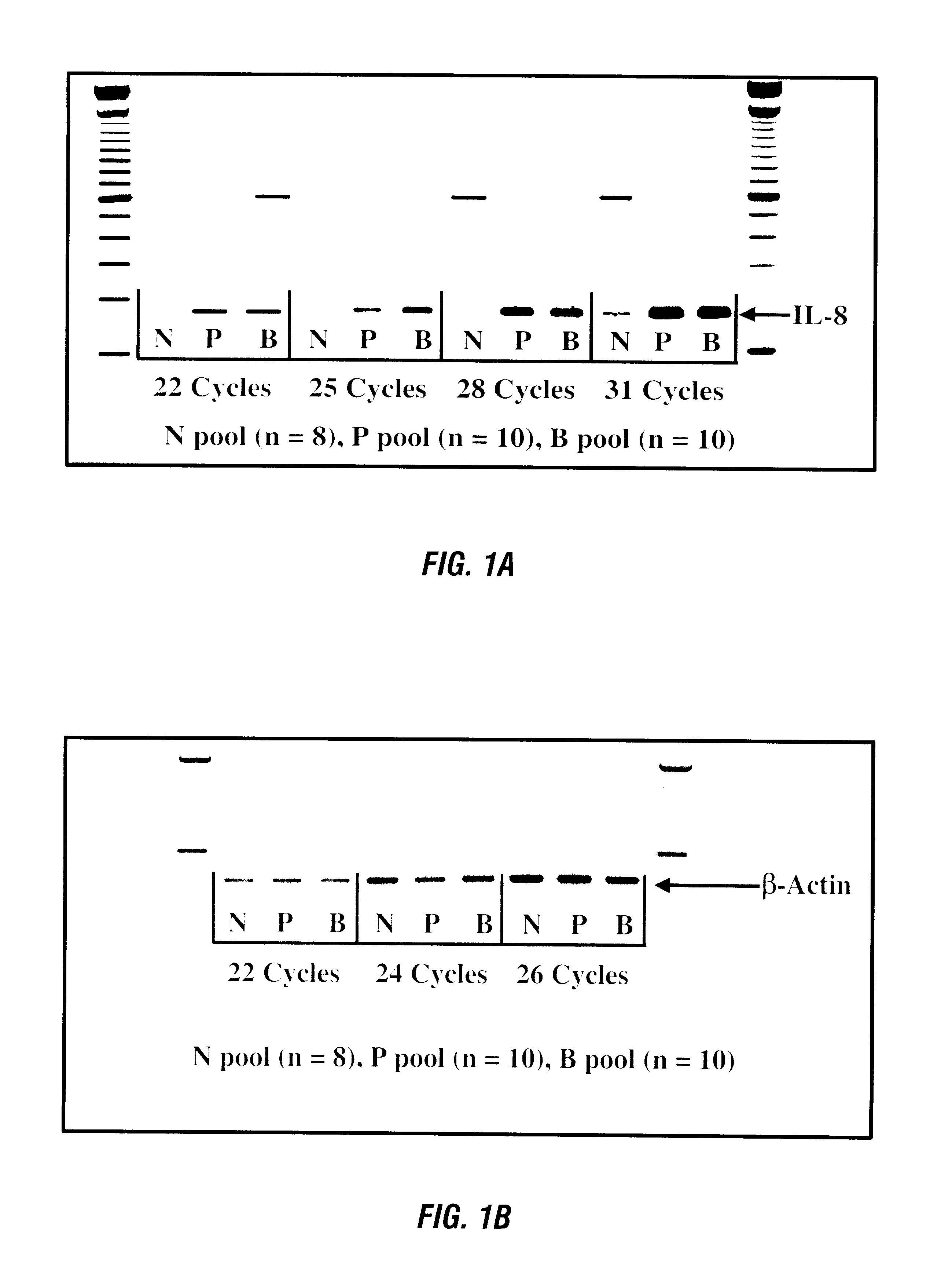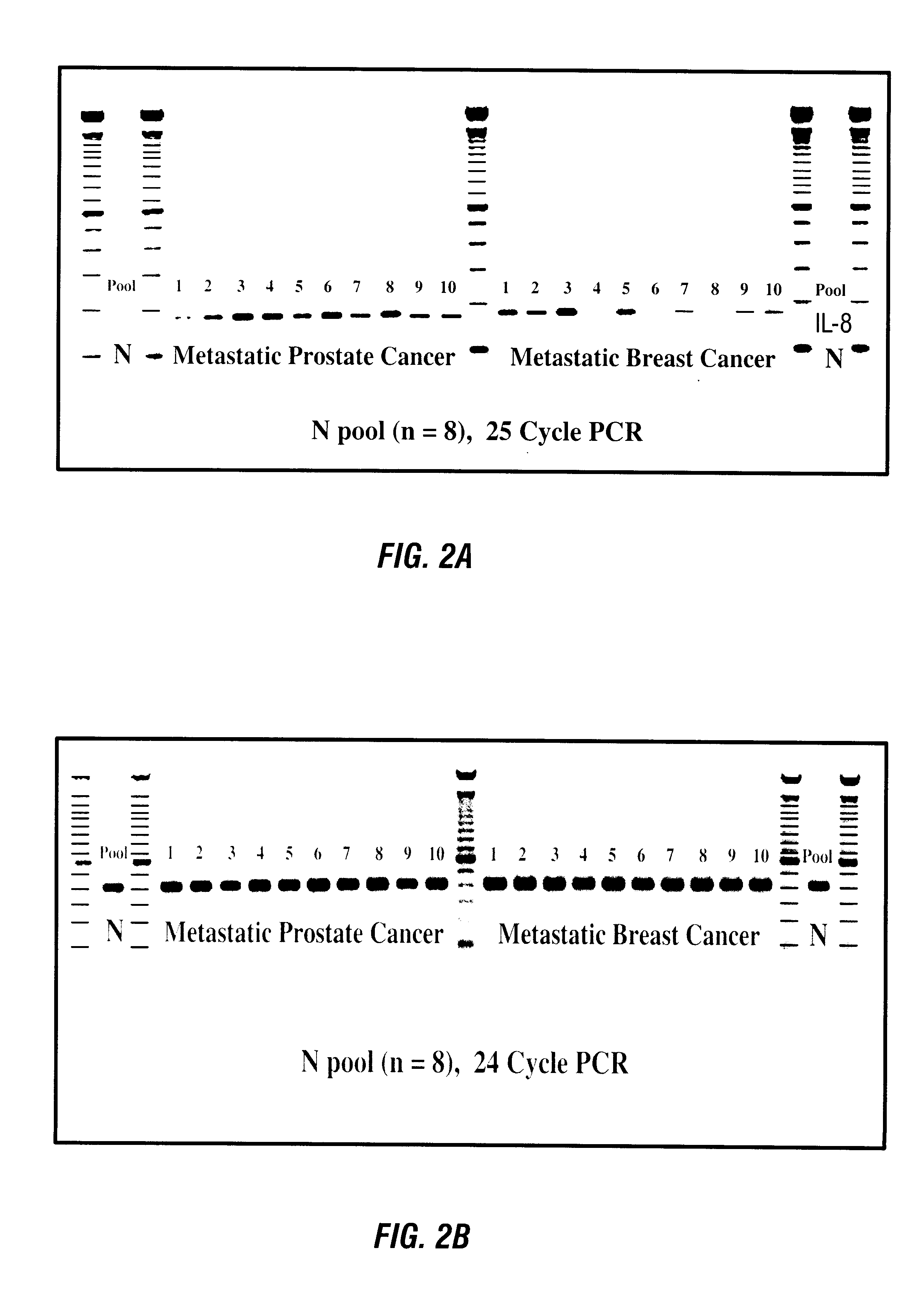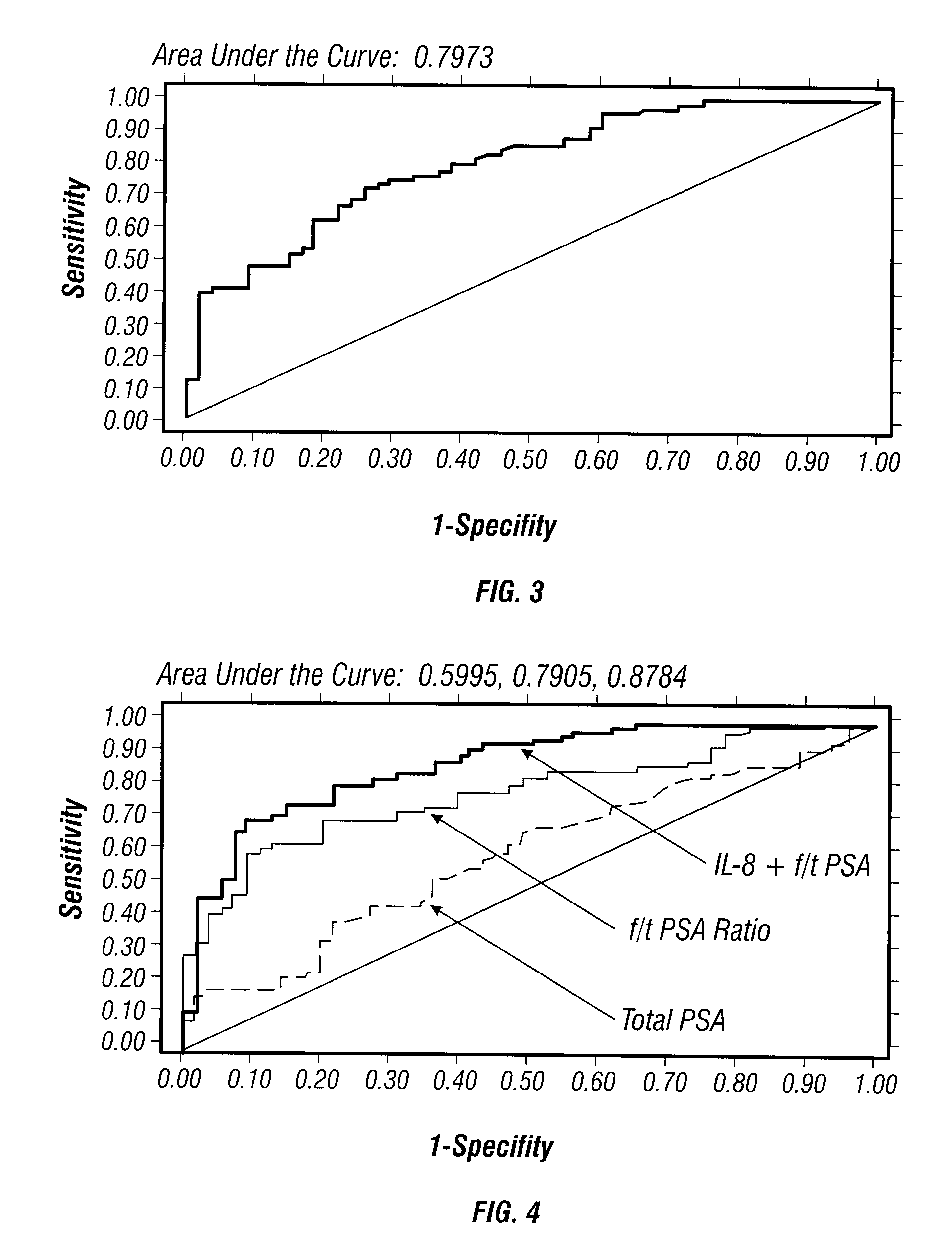Diagnosis of disease state using MRNA profiles in peripheral leukocytes
a technology of peripheral leukocytes and mrna profiles, which is applied in the field of human disease diagnosis and diagnosis, can solve the problems of lack of specificity or sensitivity, and difficulty in detection
- Summary
- Abstract
- Description
- Claims
- Application Information
AI Technical Summary
Benefits of technology
Problems solved by technology
Method used
Image
Examples
example 1
5.1 Example 1
Relative Quantitative Reverse Transcriptase-Polymerase Chain Reaction--A Method to Evaluate Novel Genes (ESTs) as Diagnostic Biomarkers.
The reverse transcription-polymerase chain reaction (RT-PCR) protocols described in the following examples were developed as a means to determine the relative abundances of mRNA species that are expressed in various tissues, organs and cells. This protocol has been described as applied to prostate tissue in U.S. application Ser. No. 08 / 692,787, incorporated in relevant part herein by reference. The protocols used to meet this need must be robust, reproducible, relatively quantitative, sensitive, conservative in its use of resources, rapid and have a high throughput rate. Relative quantitative RT-PCR has the technical features that, in theory, meet all of these criteria. In practice there are six important barriers to implementing an RT-PCR based assay that compares the relative abundances of mRNA species. The protocol described herein a...
example 2
5.2 Example 2
Identification of Markers of Metastatic Prostate Cancer by Use of RNA fingerprinting by PCR primed with oligonucleotides of arbitrary sequence.
RNA fingerprinting by PCR, primed with oligonucleotides of arbitrary sequence was performed on RNAs isolated from peripheral human blood. Bands which appeared to be differentially expressed were cloned.
For this study, total cell RNA was isolated from buffy coat cells as described above. cDNA was made from one to five fig of each isolated RNA. All cDNAs were normalized for similar amounts of .beta.-actin cDNA by RT-PCR. RT-PCR products were electrophoresed through agarose.
For relative quantitative RT-PCR with an external standard, quantitation of band intensities on ethidium bromide stained gels was performed using the IS-1000 image analysis system manufactured by the Alpha Innotech Corp. A normalizing statistic was generated for each cDNA sample, as the average of all .beta.-actin signals divided by the .beta.-actin signal for ea...
example 3
5.3 Example 3
Identification of Markers of Metastatic Prostate Cancer by Use of RNA Fingerprinting by the Pairwise Sequential Method.
RNA fingerprinting was used to identify differentially expressed RNA species according to the pairwise sequential method of McClelland et al (1994), as modified to use larger (17-25 mer) arbitrary oligonucleotides. PCR amplification products were labeled using .alpha.-32P-dCTP and were visualized by autoradiography after electrophoresis on denaturing polyacrylamide gels. A number of bands appeared to be differentially expressed, and were cloned as described above. The differentially expressed bands identified in this Example and in Example 2 above are listed in Table 4.
UC Band #321 was confirmed by RT-PCR to be down regulated in the peripheral blood of prostate cancer patients, with a four-fold decrease observed compared with normal individuals. The DNA sequence of Band #321 does not match any known sequences in the GenBank database. It therefore repres...
PUM
| Property | Measurement | Unit |
|---|---|---|
| concentration | aaaaa | aaaaa |
| temperature | aaaaa | aaaaa |
| ionic strength | aaaaa | aaaaa |
Abstract
Description
Claims
Application Information
 Login to View More
Login to View More - R&D
- Intellectual Property
- Life Sciences
- Materials
- Tech Scout
- Unparalleled Data Quality
- Higher Quality Content
- 60% Fewer Hallucinations
Browse by: Latest US Patents, China's latest patents, Technical Efficacy Thesaurus, Application Domain, Technology Topic, Popular Technical Reports.
© 2025 PatSnap. All rights reserved.Legal|Privacy policy|Modern Slavery Act Transparency Statement|Sitemap|About US| Contact US: help@patsnap.com



